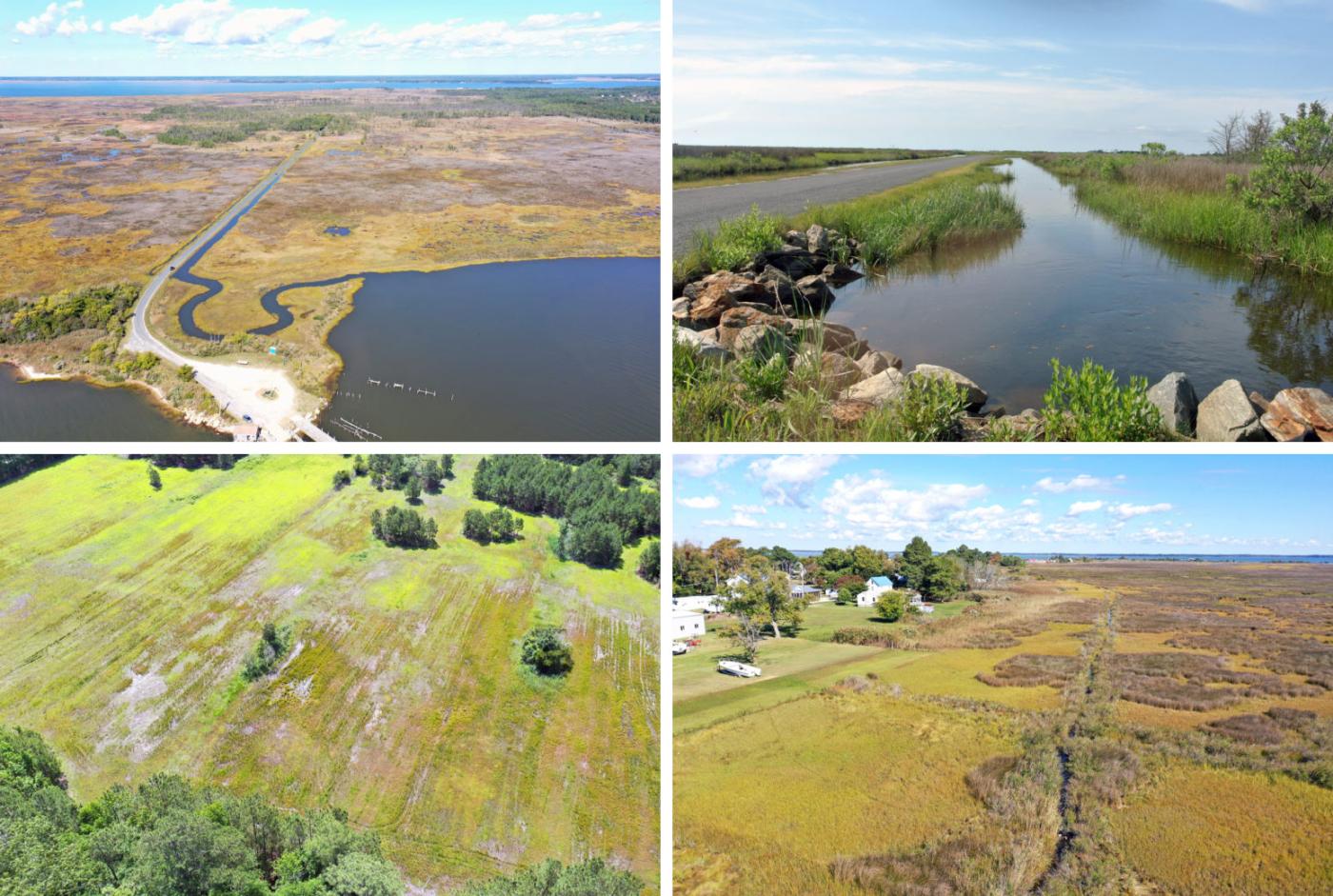
PLACES JOURNAL FEATURES "BAY MIGRATIONS" ESSAY BY ERIN PUTALIK + BRIAN DAVIS
"What lessons does the Chesapeake hold about our collective responsibility for a more just future?" ask School of Architecture faculty, Erin Putalik and Brian Davis in their essay "Bay Migrations," featured in the October 2022 edition of Places and excerpted below. In this tour of the Chesapeake marshlands bridging past and present, Putalik and Davis, reflect on four vernacular landforms—ditch banks, road ends, straight guts, and Delmarva bays—to show how "lives and landscapes have been powerfully shaped by climate-induced migration for a long time." Putalik and Davis are currently involved in several major research projects investigating Virginia's coastal landscapes.

EXCERPT FROM "BAY MIGRATIONS"
Stories about how people have arranged and maintained this commons are recorded in the landforms they created. In the ditches that drained the marshes of Accomack County, we see an effort to bind time for a while, to make home in a place where everything must move. Building docks, making roads, clearing fields, moving soil: what early U.S. settlers called improvement came to be called development, as land was reconceived first as property, then as real estate. For the past century, development has been the organizing principle for land, institutions, and societies around the world. But now it is being overtaken by another force — migration — that characterizes the fates of plants and animals, human settlements, and the assemblies they are part of, as whole landscapes move in response to sea level rise, atmospheric warming, shifts in hydrological regimes, and the changing needs and norms of people. Migration can be understood broadly as “patterned movement across space and time.” But wherever lives and livelihoods are deeply inscribed in the landscape, any definition of migration must also include a concept of home. When people migrate, home moves with them.
STORIES ABOUT HOW PEOPLE HAVE ARRANGED AND MAINTAINED THIS COMMONS ARE RECORDED IN THE LANDFORMS THEY CREATED.
This is what makes the Chesapeake marshlands so interesting. Here, lives and landscapes have been powerfully shaped by climate-induced migration for a long time. As Ina Richter observes, early modern practices like mapping, occupation, subsistence farming, indentured and enslaved labor, community-building, colonization, cultural production, and exploitation are but recent notes in a history of human habitation stretching back at least 12,000 years. Seas have risen about 100 feet in that time, and geological change has been accompanied by seismic shifts in human culture, technology, and population, including the arrival of Europeans in the 1600s. Maps show that some 500 islands have disappeared; only a handful are still habitable today. The migratory imperative challenges the fictions of improvement and development that have dominated certain strains of United States environmental mythology.
What does this history offer to a contemporary discourse around climate change, displacement, and adaptation? What lessons does the Chesapeake hold about our collective responsibility for a more just future? One way to think about these questions is to explore the marks people have made. In this essay, we look at four vernacular landforms commonly found on the Bay side of the Eastern Shore, attending to the cultural, ecological, aesthetic, and agricultural webs they are part of. Ditch banks, straight guts, duck ponds, road ends. These forms bring us closer to the matters at hand.
Read the full essay on Places, an online journal featuring public scholarship on architecture, landscape, and urbanism:
BAY MIGRATIONS
AB0UT THE AUTHORS
Erin Putalik is an assistant professor of landscape architecture and architecture at the University of Virginia.
Focusing primarily on managed forests and coastlines, her research considers how local and small-scale design practices reflect large environmental shifts. She has written broadly about the use of new wood-based materials in the context of forest depletion, and is currently working on a project on dune conservation and National Lakeshores. She is a licensed architect, holds a doctorate in design history and theory from the University of Pennsylvania, and co-directs Proof Projects with Brian Davis and Sean Burkholder. With Brian, she is currently collaborating on a U.S. Army Corps Engineering with Nature grant to develop historically and culturally rooted natural infrastructure proposals for three national parks along the Virginia coast.
Brian Davis is an associate professor of landscape architecture at the University of Virginia School of Architecture, where he is co-director of the Natural Infrastructure Lab.
His work focuses on coastlands as cultural and infrastructural landscapes, with particular interest in the Great Lakes and Chesapeake Bay. He is a member of the Dredge Research Collaborative, a Fellow of the American Academy in Rome, and a licensed landscape architect. Together with Erin Putalik and Sean Burkholder, Brian is co-founder of Proof Projects, and co-directs Healthy Port Futures with Sean. He is a researcher for the U.S. Army Corps Engineering with Nature + Landscape Architecture program, and has an abiding love for muddy places and writing about landscapes.


